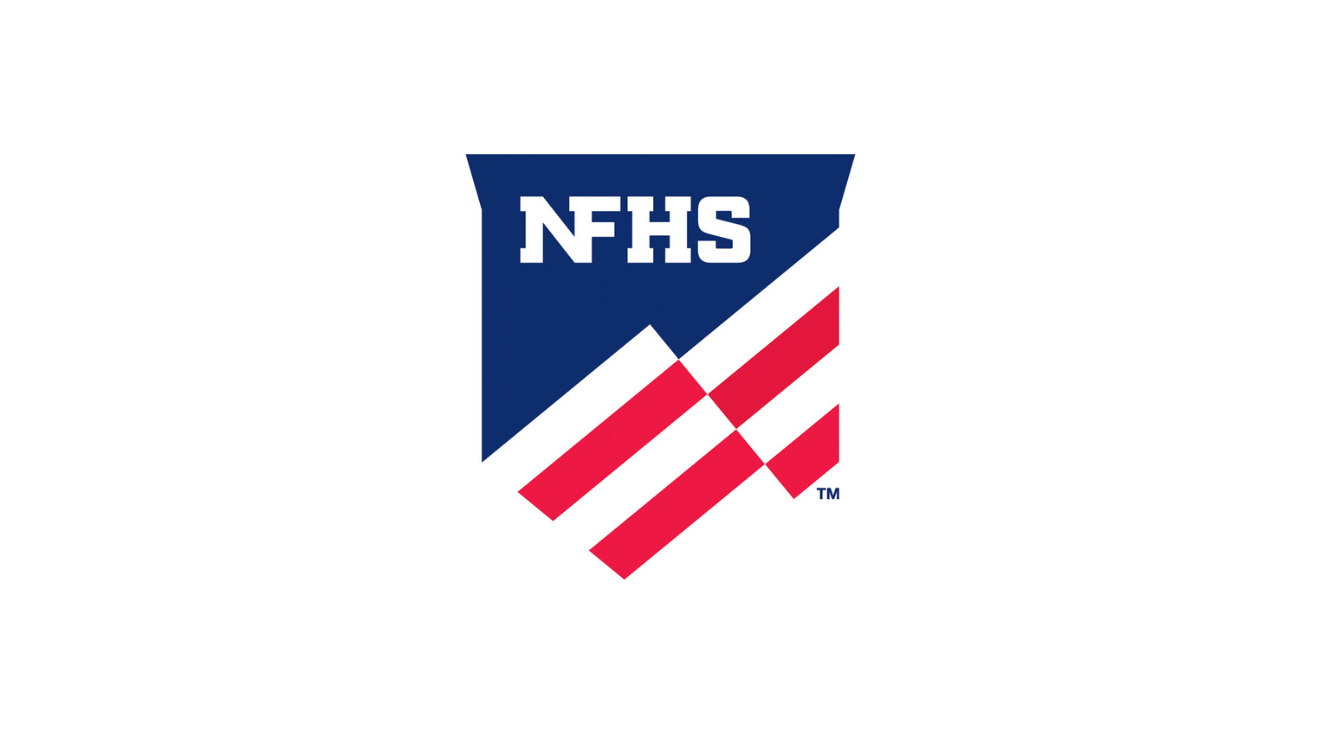INDIANAPOLIS, INDIANA (July 10, 2025) — With 21 state associations now incorporating the javelin into outdoor track and field competition, the NFHS Track and Field Rules Committee voted to move the implement construction specifications into the Track and Field Rules Book, effective with the 2026 season.
The addition of javelin specifications was one of 11 changes recommended by the committee at its June 16-18 meeting in Indianapolis – all of which were subsequently approved by the NFHS Board of Directors.
“Moving the implement construction specifications for the javelin into the rules book provides greater clarity, consistency and accessibility for high school coaches, athletes and meet officials,” said Julie Cochran, NFHS director of sports and liaison to the Track and Field Rules Committee. “By incorporating the construction requirements directly into the NFHS Track and Field Rules Book, we ensure that all necessary information is readily available, specific to the high school level, and aligned with the intent of education-based athletics. This approach maintains appropriate equipment standards while promoting ease of understanding, consistent enforcement and fairness across all levels of high school competition.”
More details on the javelin changes and the states where it is part of boys and girls track and field competition are listed below.
A new section in Rule 6-8-6 will promote risk minimization in the high jump and pole vault. The new language states that a high jump or pole vault competitor who has not entered the competition within 60 minutes from the first jump of the competition shall be allowed 1½ minutes of warm-up for high jump or two minutes for pole vault without the use of a crossbar or bungee cord under the supervision of an official. This will take place only at the beginning of a height change.
The committee noted that the current rule allows warm-up only after passing three consecutive heights, which can result in long periods of inactivity—sometimes over an hour—in large competitions. This can be a disadvantage and potential safety concern for athletes entering later.
“The committee believed that changing the rule to provide a standardized 1½ minutes for high jump or two minutes for pole vault warm-up for any athlete entering after 60 minutes of elapsed time promotes fairness, consistency and risk minimization,” Cochran said.
Another change in the high jump and pole vault concerns the addition of “items above ground level” to padding requirements in Rules 6-9-21 and 6-9-28.
“The addition of ‘above ground level’ clarifies that the padding requirement applies specifically to hard and unyielding surfaces that are elevated relative to the ground,” Cochran said. “This refinement helps differentiate between surfaces that present a greater risk of impact during a fall (such as raised concrete, asphalt, wood or platform extensions) versus ground-level areas that may already be accounted for with landing system setup.”
A change in Rule 3-2-3 gives the games committee the authority to determine the distance of takeoff boards in the horizontal jumps. As a result, the games committee can determine takeoff board placement in the long jump and triple jump aligning with its existing role in setting starting heights for the high jump and pole vault.
Two changes were made in Rule 9 regarding Indoor Track and Field. In Rule 9-1-1, the 200-meter dash was approved as an option for the 300-meter dash in the official Order of Events. The committee noted the change provides states with greater flexibility to structure events based on facility size and supports broader participation.
The other change in indoor track rules involves Rule 9-6-1, which establishes a uniform 20-meter exchange zone and creates a single standard for ease in officiating indoor relays.
Also approved by the Track and Field Rules Committee:
Rule 4-6-6c (new): No athlete shall wear audio (microphone) or video (camera) device during a race or trial or in restricted areas. This language aligns with other NFHS sports rules books.
NFHS Javelin Specifications:
The javelin shall consist of three main parts: shaft, a head and a cord grip.
- The shaft may be constructed of metal or other suitable material so as to constitute a fixed and integrated whole and shall be fixed with a metal point or rubber tip.
- The cord grip shall cover the center of gravity and shall not exceed the average diameter of the shaft by more than 8mm
- Wrapping the whipcord binding with tape is prohibited.
- Wrapping the whipcord binding with tape is prohibited.
- The cross-section shall be regularly circular throughout.
- The maximum shaft diameter shall be in front of the grip.
- The central portion of the shaft, including the area beneath the grip, may be cylindrical or taper slightly toward the rear. However, the diameter reduction from the front to the rear of the grip must not exceed 0.25 mm.
- From the grip, the shaft shall taper smoothly toward both the tip and the tail. The profile from the grip to the front tip and to the rear tail must be straight or slightly convex, with no abrupt changes in diameter—except directly behind the head and at the front and rear of the grip. The diameter reduction behind the head must not exceed 2.5 mm.
Notes:
- The shaft must be circular in cross-section. A small variation is allowed – up to 2% between the largest and smallest diameter at any given cross-section. The average of these two measurements must still fall within the standard specifications for a circular javelin (as detailed in the tables below).
- To check the straightness or slight convexity of the javelin’s profile, use a metal straight edge (at least 500 mm long) along with two feeler gauges: one 0.20 mm and one 1.25 mm thick.
- If the profile is slightly convex, the straight edge may rock slightly but will stay in firm contact with part of the javelin.
- If the profile is straight, you should not be able to insert the 0.20 mm gauge anywhere between the javelin and the straight edge along the contact area.
- This rule does not apply direcly behind the head. At that point, it must be impossible to insert the 1.25 mm gauge.
Specifications for the alternate rubber tip used in lieu of the metal point:
- Overall length of rubber tip = 35-77 millimeters
- Diameter of front of rubber tip = 14-35 millimeters
- Thickness at front of rubber tip = 5 millimeter minimum
NOTE: When a rubber tip is used, the metal point shall end in a slightly rounded button-shape or other feature onto which the rubber tip shall be attached. The tip should be made of rubber or an equivalent soft plastic.
The javelin shall meet all World Athletics specifications. Minimum weight and diameter limits for admission to competition and acceptance of a Record (inclusive of the cord grip): The most important specifications are outlined below:
| Boys Competition | Girls Competition | |
| 800 g | 600 g | |
| Minimum Record Wt. | 800 g | 600 g |
| Overall Length min. | 2600 mm | 2200 mm |
| Overall Length max. | 2700 mm | 2300 mm |
| Length – Metal Head min. | 250 mm | 250 mm |
| Length – Metal Head max. | 330 mm | 330 mm |
| Distance From tip to CG min. | 900 mm | 800 mm |
| Distance Froom tip to CG max. | 1060 mm | 920 mm |
| Diameter of Shaft at thickest pt. min. | 25 mm | 10 mm |
| Diameter of Shaft at thickest pt. max. | 30 mm | 25 mm |
| Width of cord grip. min. | 150 mm | 140 mm |
| Width of cord grip max. | 160 mm | 150 mm |
| Taper Meas. from Tip | 150 mm | 150 mm |
| Taper Meas. from Tail | 150 mm | 150 mm |
| Diameter of Tip Taper Measurement Point | <= 0.80 diameter | <= 0.80 diameter |
| Diameter at Tail Taper Measurement Point | >= 0.40 diameter | >= 0.40 diameter |
| Diameter at Midpoint Tip to CG | <= 0.90 diameter | <= 0.90 diameter |
| Tail Diameter min | 3.5 mm | 3.5 mm |
States with high school javelin competition (boys and girls):
Alabama, Arizona, Connecticut, Florida, Idaho, Maine, Massachusetts, Missouri, Louisiana, Montana, New Hampshire, New Jersey, New Mexico, North Dakota, Oregon, Pennsylvania, Rhode Island, South Carolina, South Dakota, Utah and Washington.
Topics
High Jump Pole Vault Julie Cochran Javelin Track and Field High School NFHS Rules




 Back
to News
Back
to News
